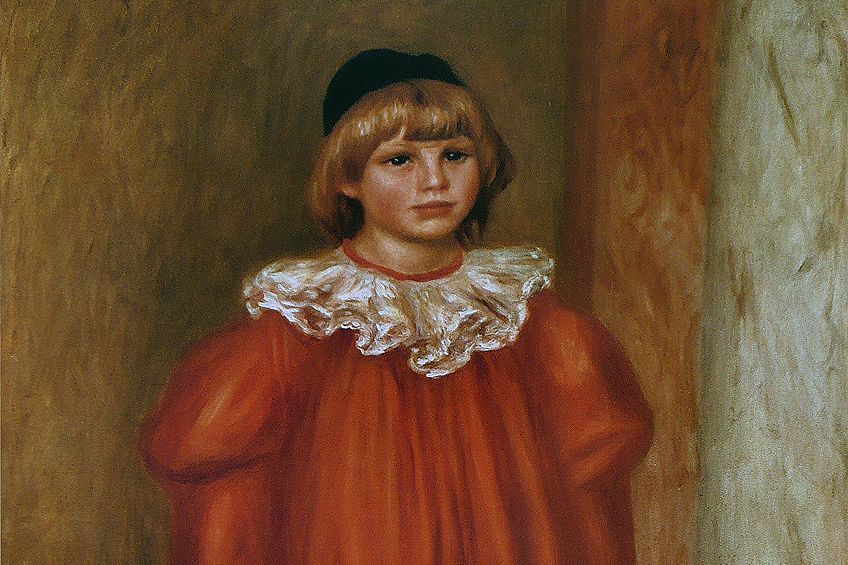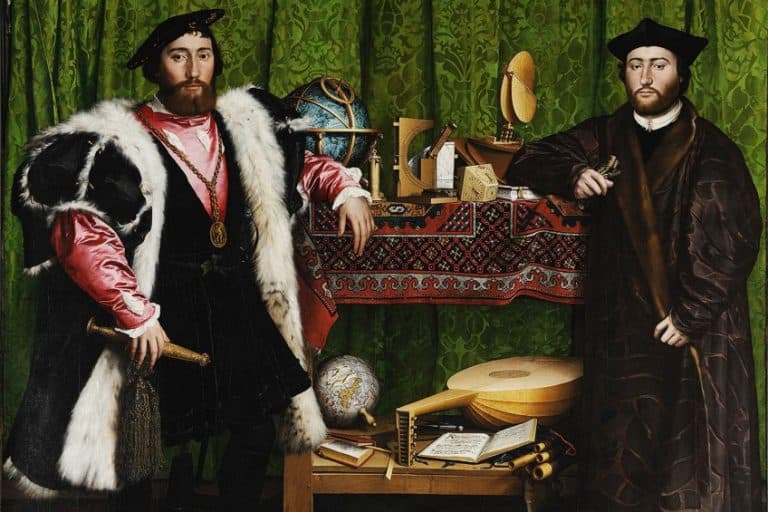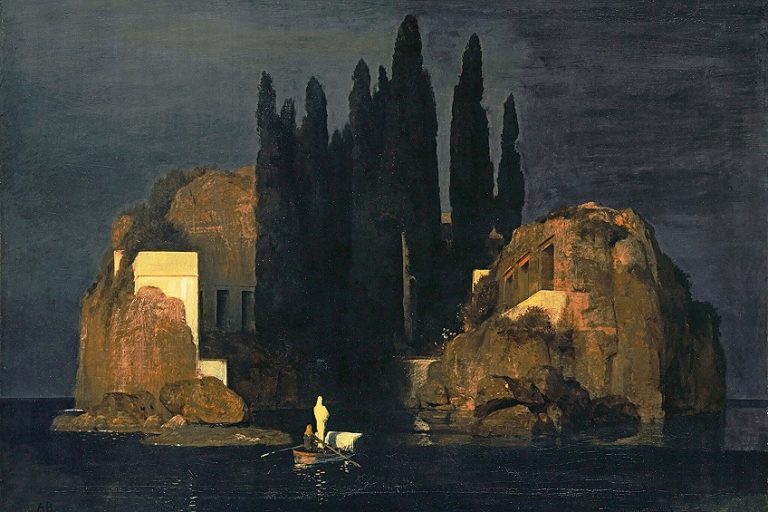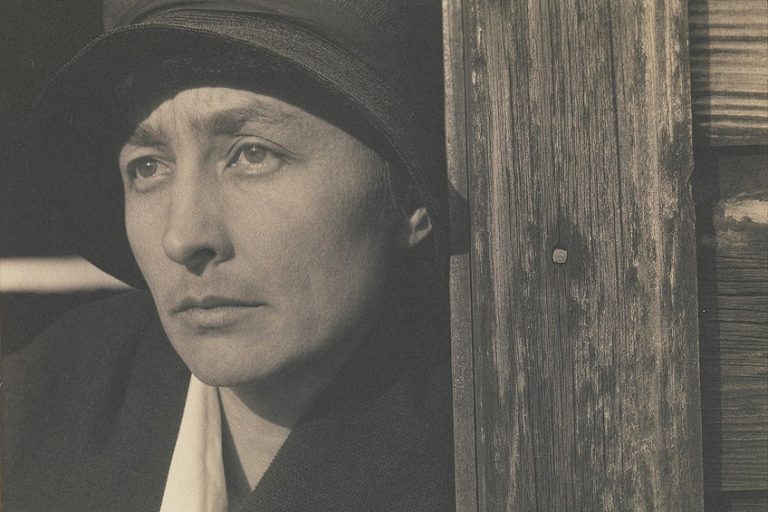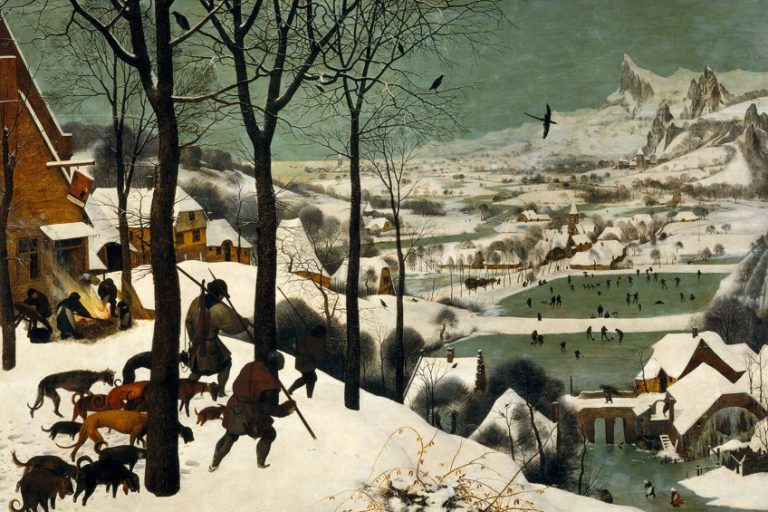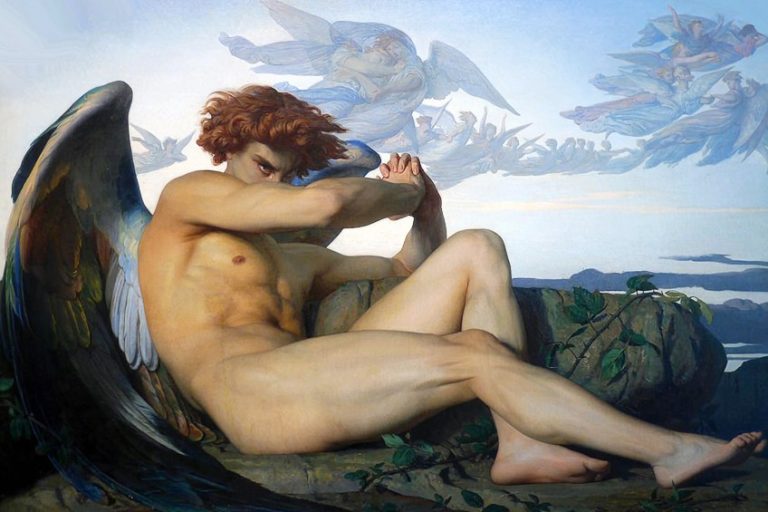Famous Red Paintings – An Introduction to Paintings in Red
Every color has a specific range of emotions associated with it, and red is no exception. Red can be fiery – both in passion and in anger, perhaps this is why there is so much red in art – it’s a color that artists can relate to. Red artworks are bold and striking – there is an urgency to the color – perhaps why it is used in warning signs. To discover more about paintings in red, let us take a look at the most famous red paintings ever made.
Table of Contents
- 1 The World’s Most Famous Red Paintings
- 1.1 Portrait of Tommaso Inghirami (1509) by Raphael
- 1.2 Portrait of John Joseph Merlin (1782) by Thomas Gainsborough
- 1.3 Captain Richard Gubbins (1805) by John Constable
- 1.4 Madame Monet in a Japanese Kimono (1876) by Claude Monet
- 1.5 Dr. Pozzi at Home (1881) by John Singer Sargent
- 1.6 Claude Renoir en Clown (1909) by Pierre-Auguste Renoir
- 1.7 Mit Und Gegen (1929) by Wassily Kandinsky
- 1.8 Red Hills and Bones (1941) by Georgia O’Keeffe
- 1.9 No. 301 (1959) By Mark Rothko
- 1.10 Red Lenin (1987) by Andy Warhol
- 2 Frequently Asked Questions
The World’s Most Famous Red Paintings
One of the earliest colors that humans were able to successfully reproduce in a variety of hues using ochre material was red. The hue has served as a powerful king’s emblem and has even come under fire for being connected with vice and evil during periods like the Protestant Reformation. It is one of the most recognizable hues that has been employed in the most well-known works of art throughout history. The color red and all of its variants, from deep crimson to softer pink tints, have been extensively explored by contemporary abstract painters. Here are some of our favorite paintings in red.
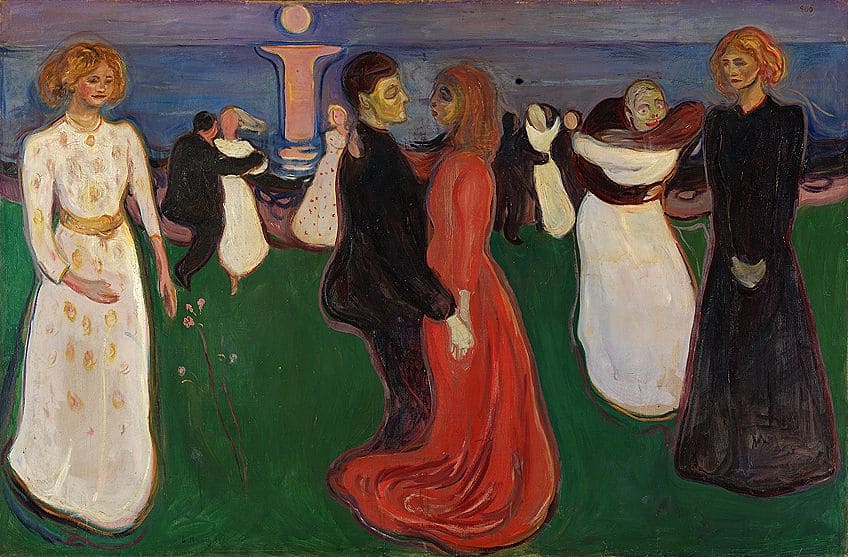
Portrait of Tommaso Inghirami (1509) by Raphael
| Artist | Raffaello Sanzio da Urbino (1483 – 1520) |
| Date Completed | 1509 |
| Medium | Oil on wood |
| Dimensions (cm) | 91 x 61 |
| Current Location | Isabella Stewart Gardner Museum, Boston, United States |
Tommaso Inghirami, a longtime friend of the painter and figure in this artwork, is portrayed in this red artwork. Inghirami’s religious attire, which was connected to his status in the Catholic church, is strongly displayed throughout the piece. This is one of the most lifelike works from the time, according to many art critics and historians. Many people believe this specific painting to be among the most famous of the Renaissance era.
Inghirami’s flowing robes were expertly executed by the painter.
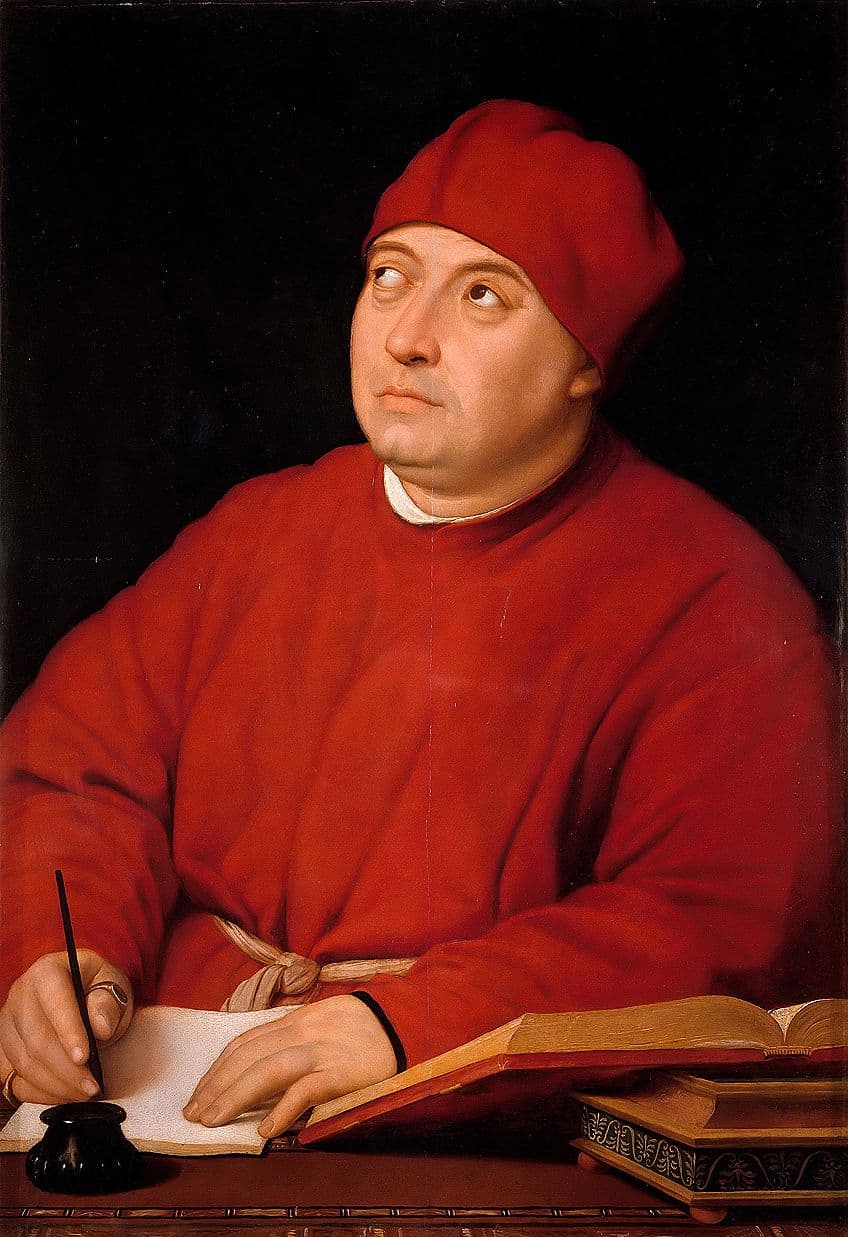
Portrait of John Joseph Merlin (1782) by Thomas Gainsborough
| Artist | Thomas Gainsborough (1727 – 1788) |
| Date Completed | 1782 |
| Medium | Oil on canvas |
| Dimensions (cm) | 64 x 76 |
| Current Location | Kenwood House, Hampstead Heath, United Kingdom |
Our first red artwork was produced by British painter, Thomas Gainsborough, who created a number of highly valued Romantic paintings during his lifetime in the middle of the 18th century. The image of Merlin shows him holding one of his famous creations while wearing a striking, fashionable red jacket similar to those worn by aristocracy during this era. The artwork is executed in the traditional warm, realistic light that frequently characterized many Romantic paintings. This light also served to concentrate the viewer’s attention more on Merlin’s famous coat in the artwork’s center.
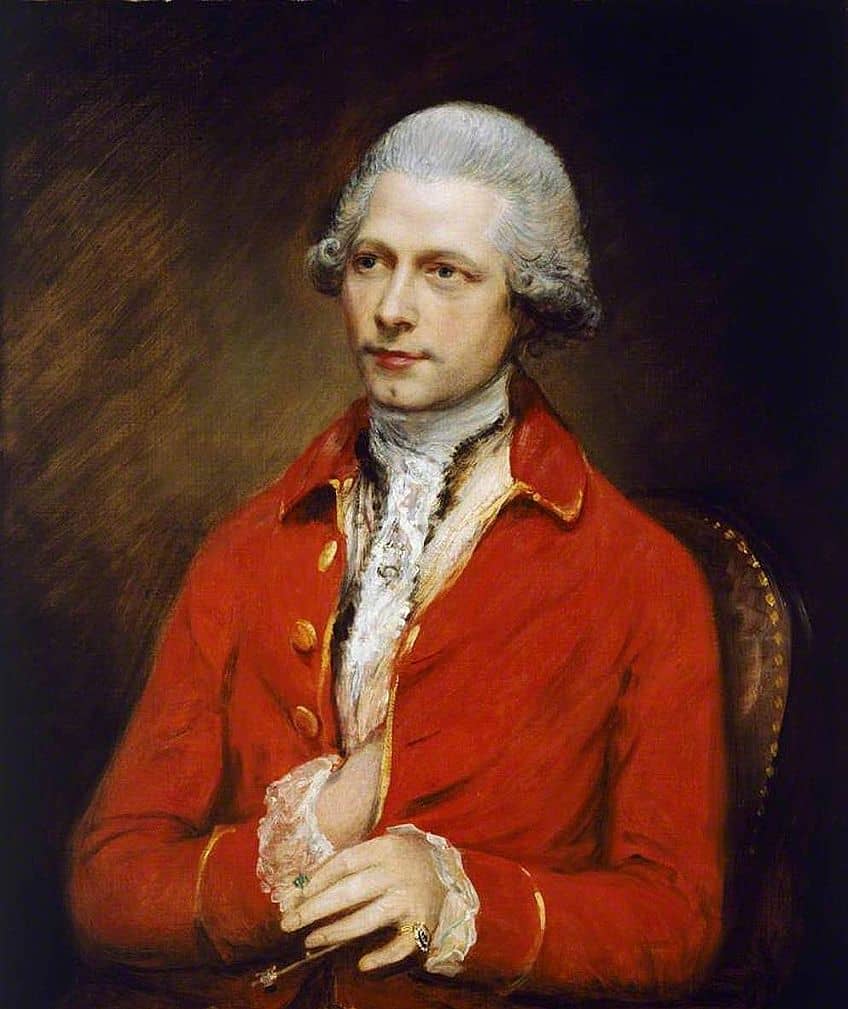
Captain Richard Gubbins (1805) by John Constable
| Artist | John Constable (1776 – 1837) |
| Date Completed | 1805 |
| Medium | Oil on canvas |
| Dimensions (cm) | 76 x 63 |
| Current Location | Yale Center for British Art, New Haven, United States |
Landscape paintings of John Constable are well known and frequently depict the British countryside where he lived. The picture of Captain Richard Gubbins, however, is among Constable’s most well-known creations. The subject, Captain Gubbins, is depicted as seated and poised in a style that emphasizes the image of British nobility from this era. Constable painted this piece in 1805. Constable used stunning features in the painting’s backdrop that appear to draw attention to the subject’s unusual red coat even more.
The hue of Gubbin’s garment seems to have a powerful presence in the viewer’s eye, making this piece one of the most renowned paintings in red.
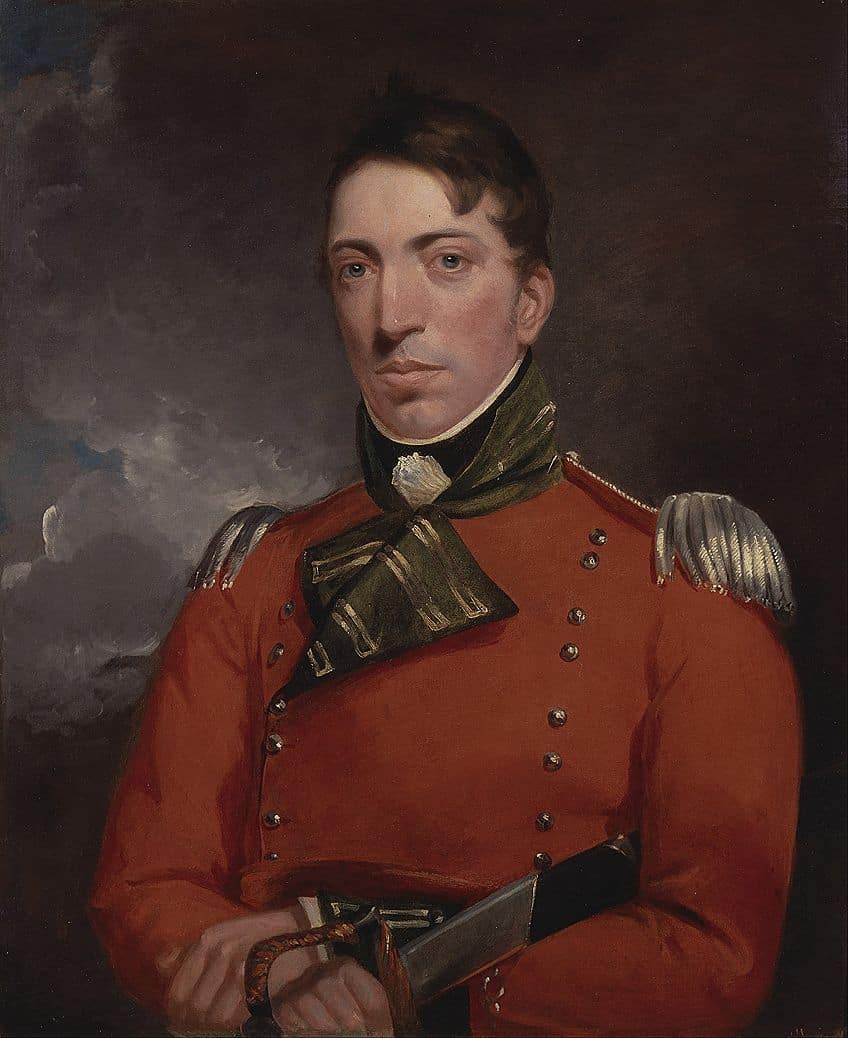
Madame Monet in a Japanese Kimono (1876) by Claude Monet
| Artist | Claude Monet (1840 – 1926) |
| Date Completed | 1876 |
| Medium | Oil painting |
| Dimensions (cm) | 231 x 142 |
| Current Location | Museum of Fine Arts, Boston, United States |
Camille Doncieux, Claude Monet’s first wife, is seen in this 1876 picture wearing a gorgeously embellished Japanese kimono. It is regarded as one of the most renowned works from his private life because of the artist’s amazing control of the flowing gown. Madame Monet is seen in this picture wearing a magnificent kimono, which is known for its delicate, elegant design and was thought to be a customary Japanese dress at the time.
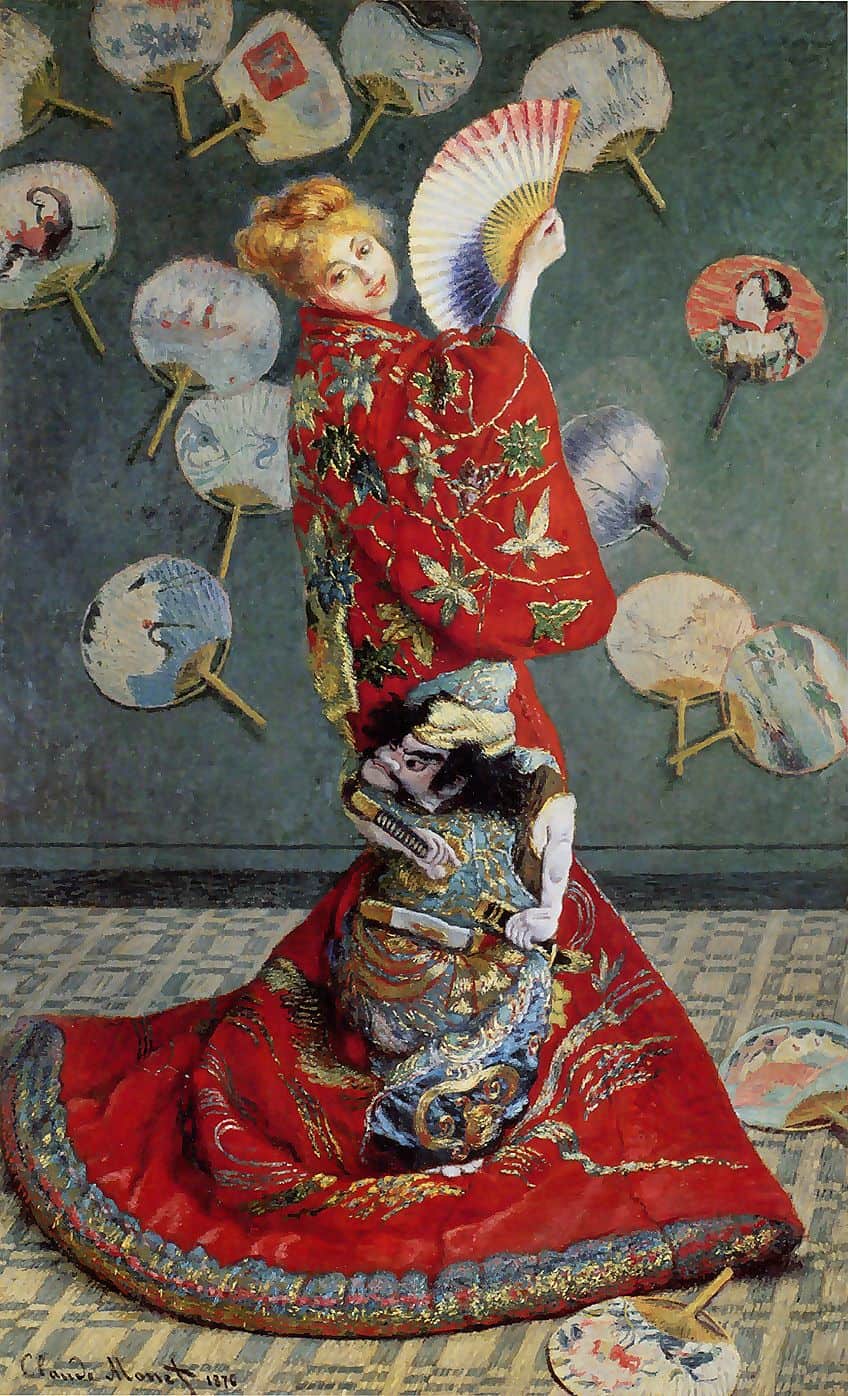
Dr. Pozzi at Home (1881) by John Singer Sargent
| Artist | John Singer Sargent (1856 – 1925) |
| Date Completed | 1881 |
| Medium | Oil painting |
| Dimensions (cm) | 201 x 102 |
| Current Location | Hammer Museum, Los Angeles, United States |
The painter, who was born in the United States, visited Europe and eventually became enmeshed in French civilization in the late 19th century. The gynecologist Dr. Samuel-Jean Pozzi is depicted in this beautiful example of red in art. He introduced groundbreaking new techniques into the field of medicine.
Dr. Pozzi and Sargent were good friends, and this work highlights how highly regarded his colleague was to the artist.
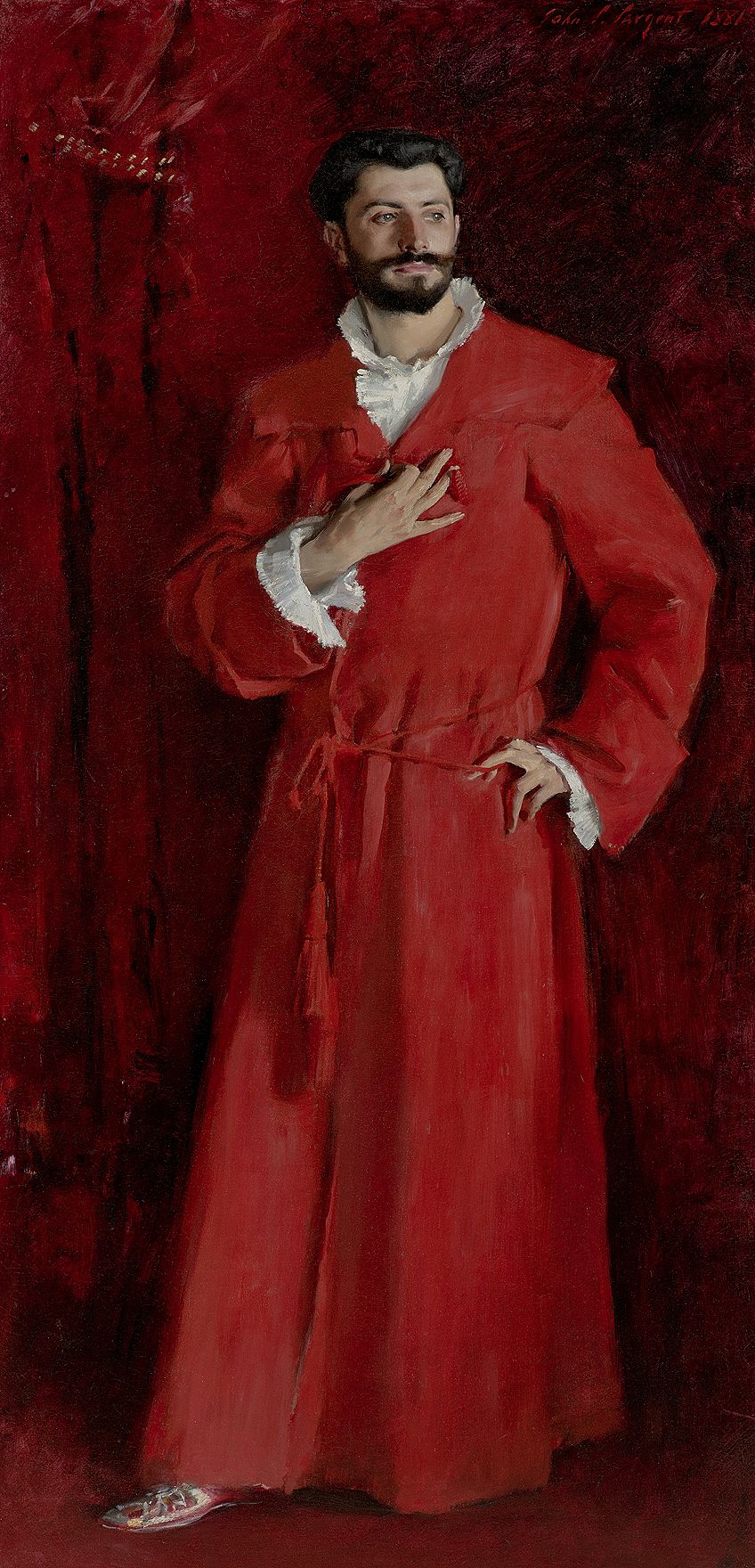
Claude Renoir en Clown (1909) by Pierre-Auguste Renoir
| Artist | Pierre-Auguste Renoir (1841 – 1919) |
| Date Completed | 1909 |
| Medium | Oil on canvas |
| Dimensions (cm) | 77 x 120 |
| Current Location | Walter-Guilaume Collection |
In this painting, a little child, Renoir’s son, is seen wearing a flowing red costume that was typical of a clown figure of the period. It is well known that the artist frequently painted scenes of his own family but very seldom had them stand for a single portrait. Because the son’s flowing clown costume attracts the viewer’s attention straight away, this artwork is notable for the artist’s use of the color red.
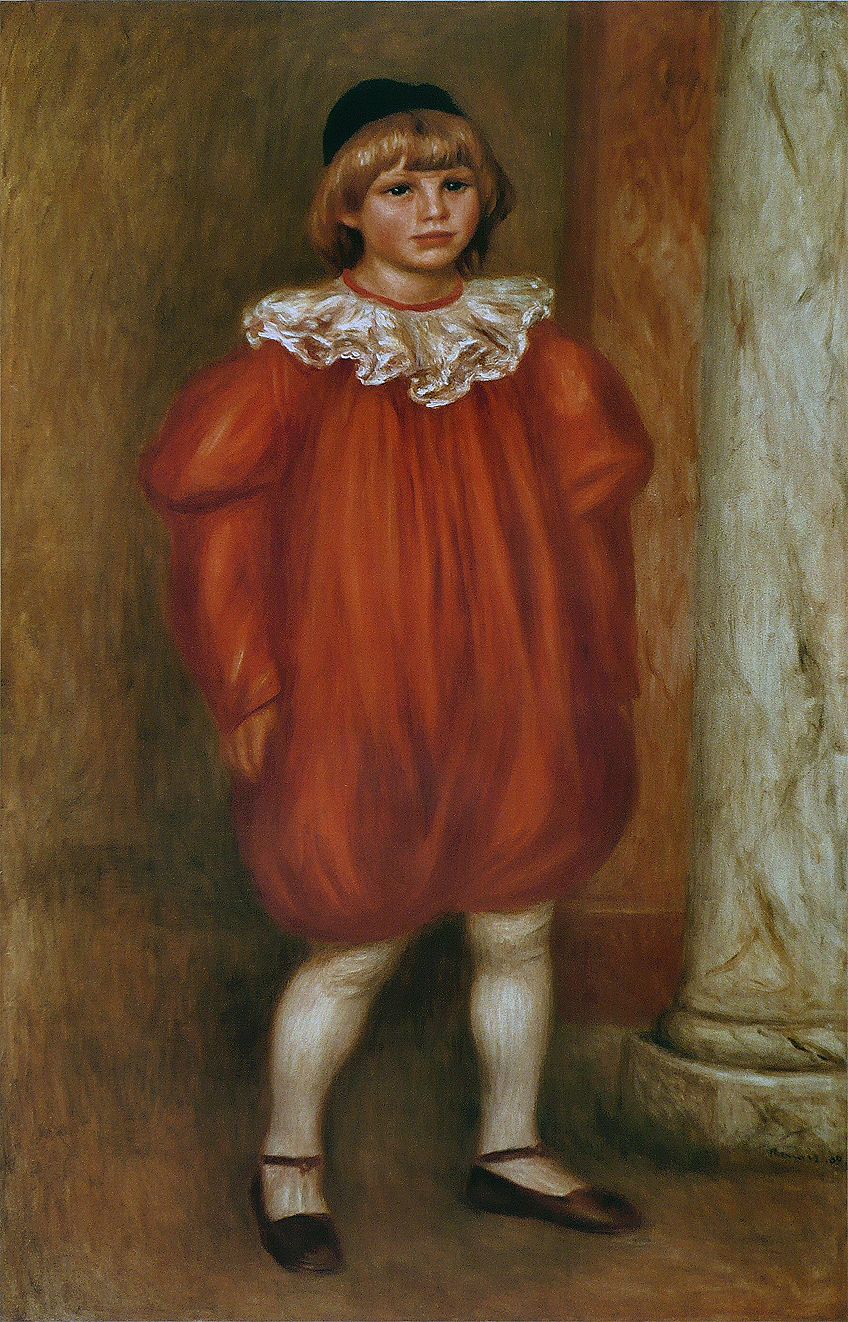
Mit Und Gegen (1929) by Wassily Kandinsky
| Artist | Wassily Kandinsky (1866 – 1944) |
| Date Completed | 1929 |
| Medium | Oil on canvas |
| Dimensions (cm) | 35 x 48 |
| Current Location | Private collection |
For Kandinsky, “Inner necessity” is the guiding concept of art, the basis of shapes, and the harmony of colors. He describes it as the idea of effective communication between the form and the spirit of the person. Every shape is the boundary between one surface and another; it has an interior substance, which explains the impact it has on someone who looks at it carefully and deeply.
Warm, animated, and agitated, red is a powerful color that moves on its own.
Red Hills and Bones (1941) by Georgia O’Keeffe
| Artist | Georgia O’Keeffe (1887 – 1986) |
| Date Completed | 1941 |
| Medium | Oil on canvas |
| Dimensions (cm) | 75 x 101 |
| Current Location | Art Institute of Chicago, Chicago, United States |
Georgia O’Keeffe started her professional career in the country’s east but eventually relocated to New Mexico in the west after visiting there. She felt a strong connection to the state’s natural splendor, especially the rich red tones of the desert area with its canyons and hills. This piece represented the magnificence the artist perceived in the desert environment, which to many was a lifeless wasteland. A massive red hill can be seen in the artwork, which seems to command the canvas; a smaller hill can be seen in the picture’s center.
No. 301 (1959) By Mark Rothko
| Artist | Mark Rothko (1903 – 1970) |
| Date Completed | 1959 |
| Medium | Oil painting |
| Dimensions (cm) | 30 x 45 |
| Current Location | National Gallery of Art, London, United Kingdom |
Many of Rothko’s most well-known abstract paintings have vivid hues that cover the whole canvas, compelling the observer to look at the color in all of its nuanced tones. In one of his most well-known works, red is employed in a way that painters before him had never done. The artwork, known as No. 301, was produced in 1959. The piece is colored in two distinct colors of deep crimson.
One deep red color permeates the whole painting, with a single rectangular block in the center being a deeper, more striking reddish tint.
Red Lenin (1987) by Andy Warhol
| Artist | Andy Warhol (1928 – 1987) |
| Date Completed | 1987 |
| Medium | Screenprint |
| Dimensions (cm) | 100 x 74 |
| Current Location | Museum of Modern Art, New York, United States |
The unusual artwork of Andy Warhol, which included several great individuals from the contemporary era, is what made him so well-known. Vladimir Lenin, a contentious figure associated with Russia, appears in one of Warhol’s works. Lenin’s visage and bust appear to be jutting out of the artwork’s center, and Warhol employed a vivid, strong red hue to dominate the full canvas from top to bottom. This red artwork has a feeling of abrasiveness and is perceived by many art historians as being aggressive for the observer.
That completes our list of famous red paintings. Red artworks have always stood out as they contain a color that demands attention from its viewers. Whether your personal taste or not, red artwork can definitely not be regarded as dull. Using red in art ensures that the artist will catch the eye of an observer and draw them into the picture, allowing the artist to convey the message of the piece. Red is a color with a bold statement, and it’s up to the artist to choose how they use it: it can represent both life and war at the same time.
Take a look at our red paintings webstory here!
Frequently Asked Questions
What Does the Color Red Symbolize in Art?
Red is a very strong hue. It may also represent rage, seduction, aggression, and danger. It is a sign of strength, passionate love, adventure, and vitality. The Greek battle gods were associated with the color red. The hue was associated with both good and bad things. On one side, there is violence, hostility, and struggle; on the other, there is affection, heat, and compassion.
Why Do Artists Use Red in Art?
Red’s symbolism has been used extensively throughout history. World leaders have always displayed their dominance by dressing in crimson. This hue was used by artists to represent the influence of royalty in their works. Deep red colors were used to embellish the royal robes, gowns, and headgear. This makes their moral and political strength quite clear. Revolutionaries all around the world used the hue as a sign of brand-new liberty and freedom.
Isabella studied at the University of Cape Town in South Africa and graduated with a Bachelor of Arts majoring in English Literature & Language and Psychology. Throughout her undergraduate years, she took Art History as an additional subject and absolutely loved it. Building on from her art history knowledge that began in high school, art has always been a particular area of fascination for her. From learning about artworks previously unknown to her, or sharpening her existing understanding of specific works, the ability to continue learning within this interesting sphere excites her greatly.
Her focal points of interest in art history encompass profiling specific artists and art movements, as it is these areas where she is able to really dig deep into the rich narrative of the art world. Additionally, she particularly enjoys exploring the different artistic styles of the 20th century, as well as the important impact that female artists have had on the development of art history.
Learn more about Isabella Meyer and the Art in Context Team.
Cite this Article
Isabella, Meyer, “Famous Red Paintings – An Introduction to Paintings in Red.” Art in Context. March 3, 2023. URL: https://artincontext.org/famous-red-paintings/
Meyer, I. (2023, 3 March). Famous Red Paintings – An Introduction to Paintings in Red. Art in Context. https://artincontext.org/famous-red-paintings/
Meyer, Isabella. “Famous Red Paintings – An Introduction to Paintings in Red.” Art in Context, March 3, 2023. https://artincontext.org/famous-red-paintings/.


